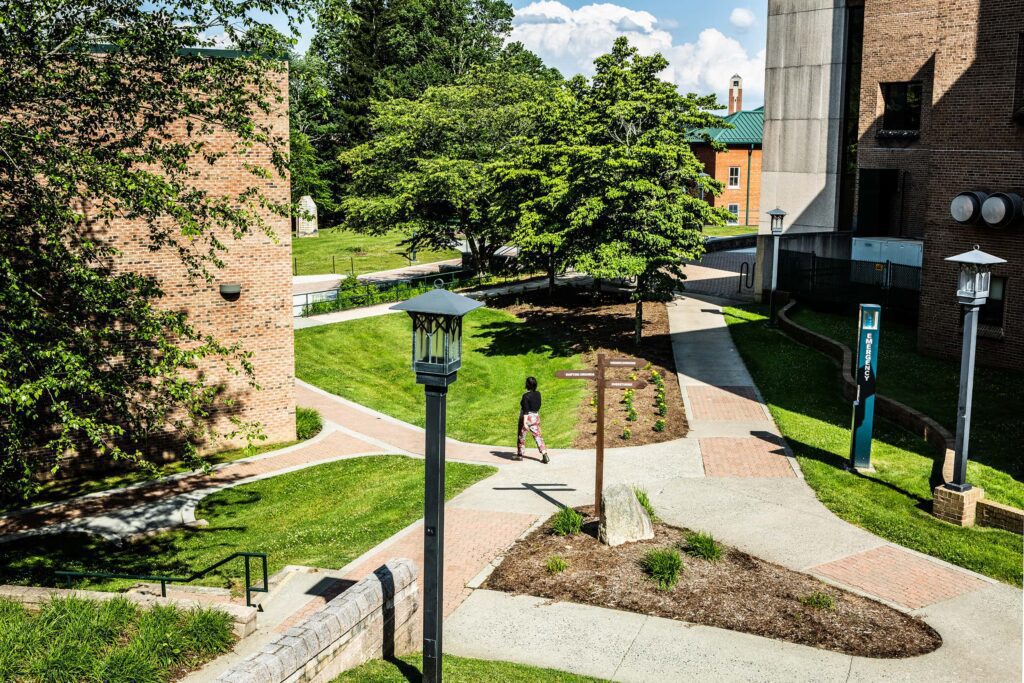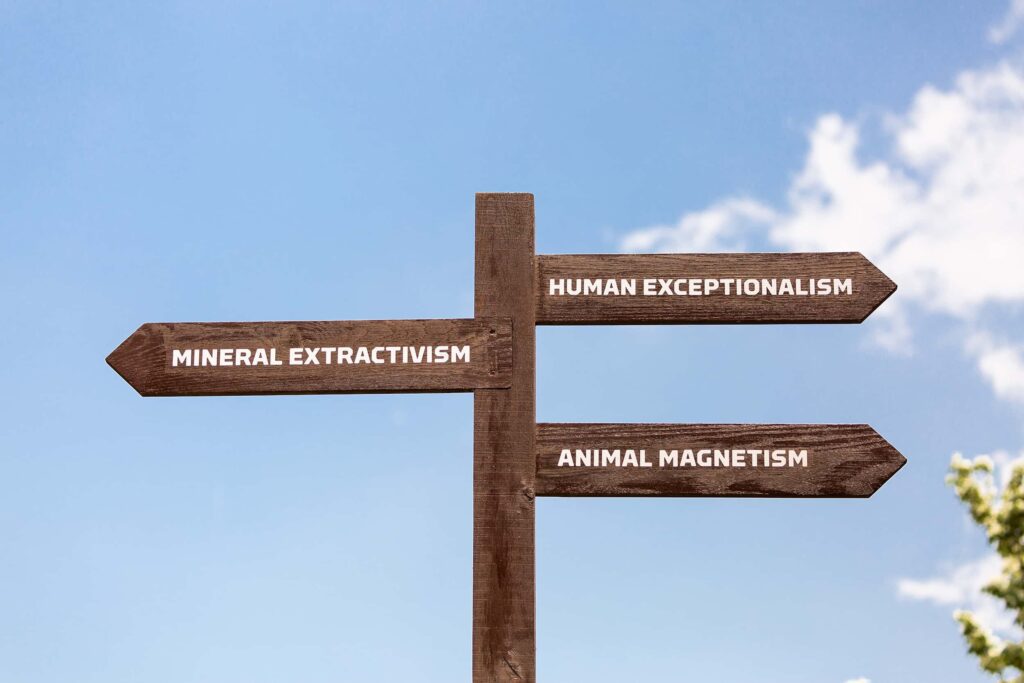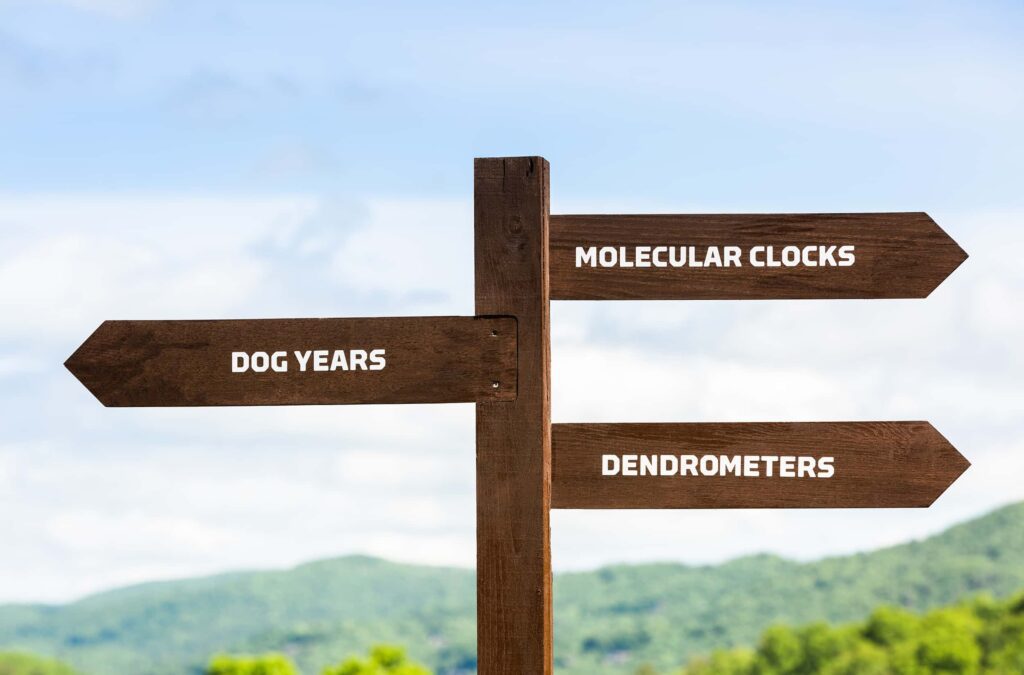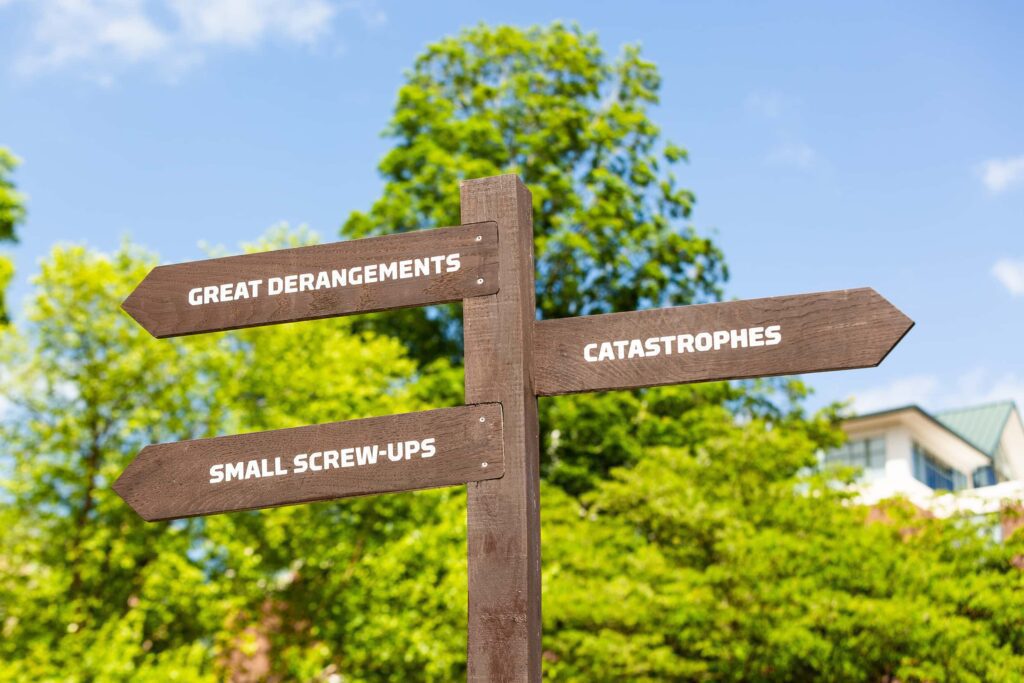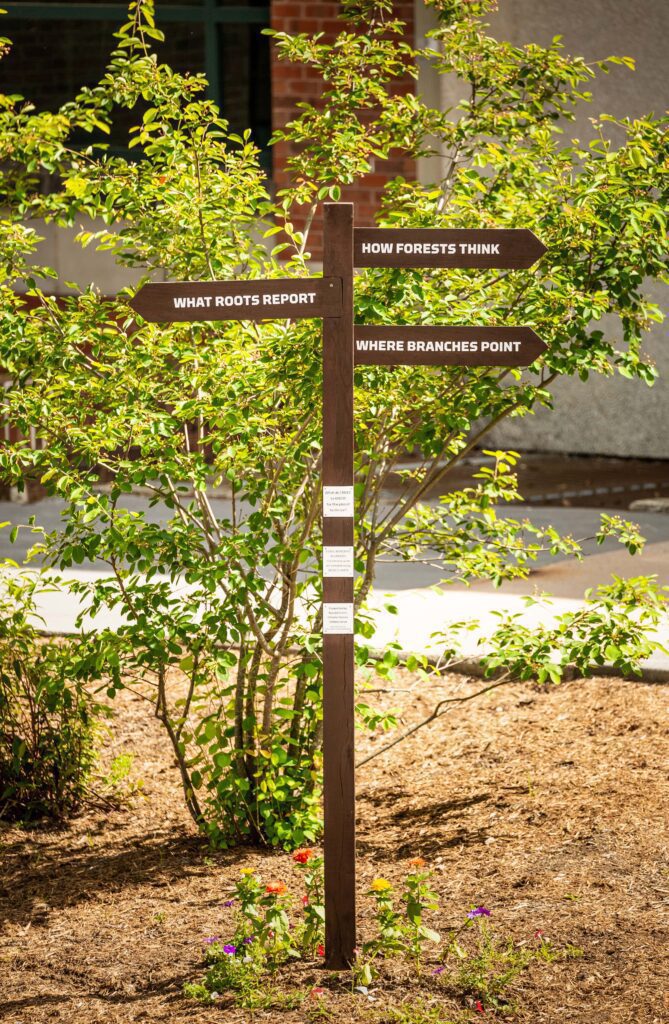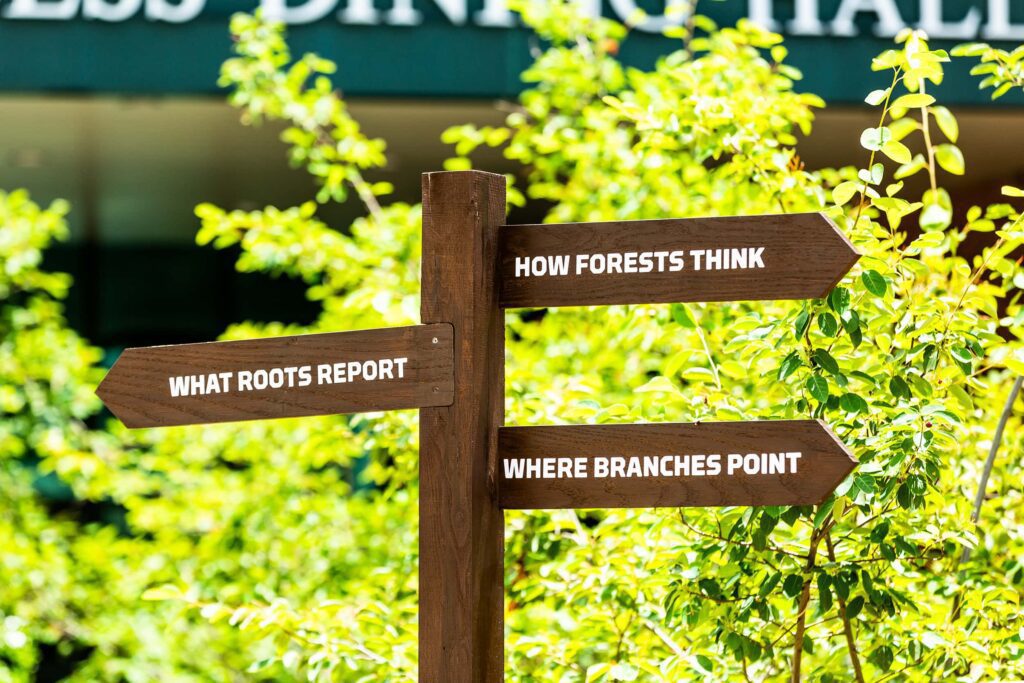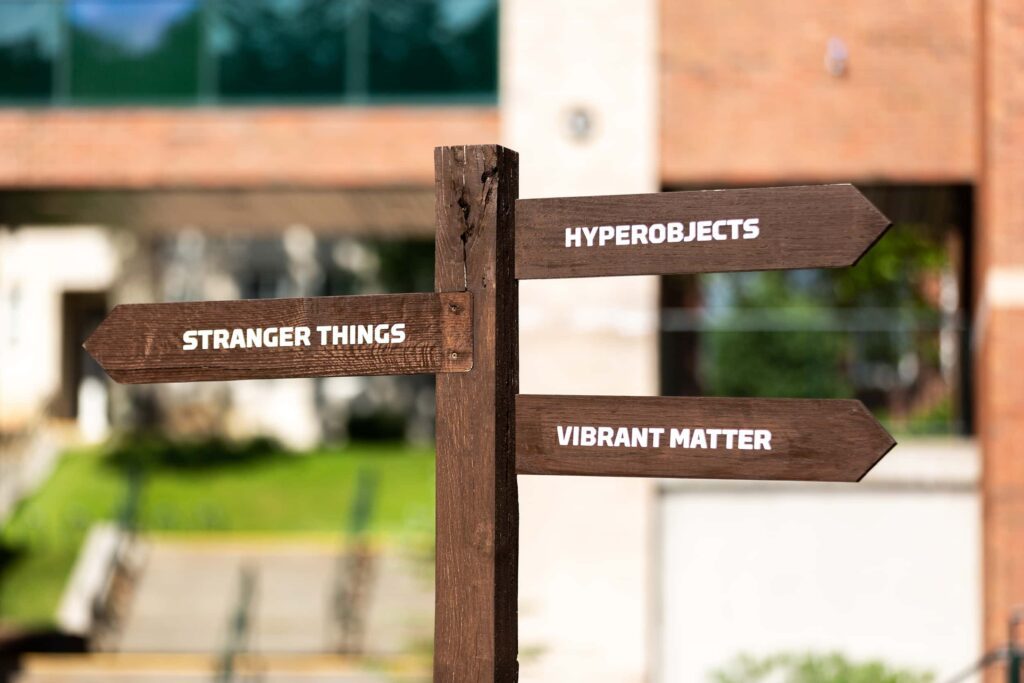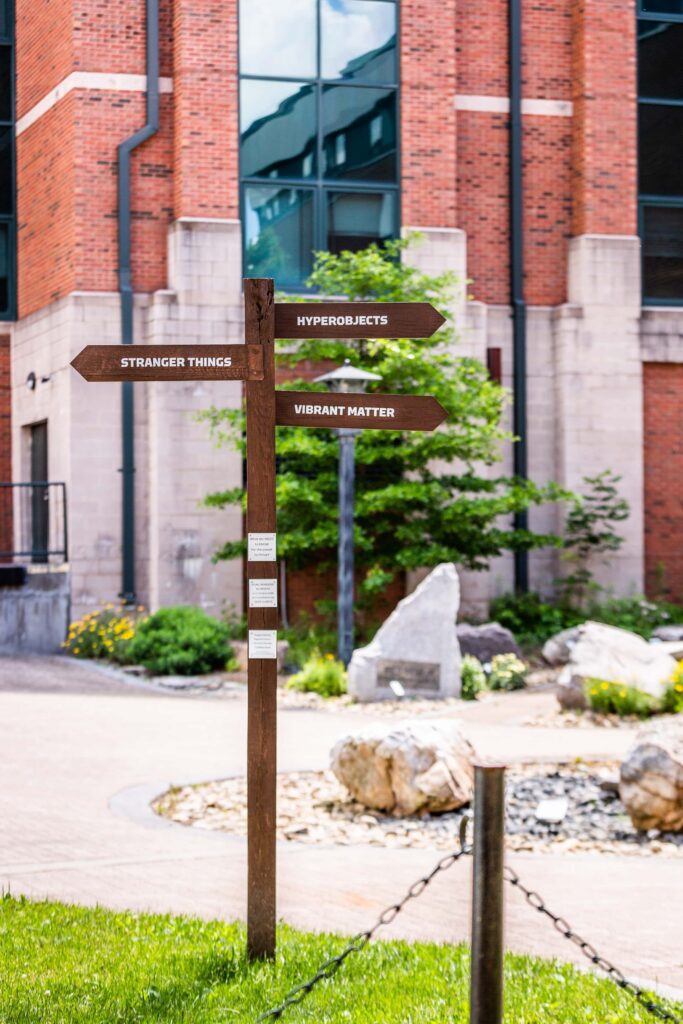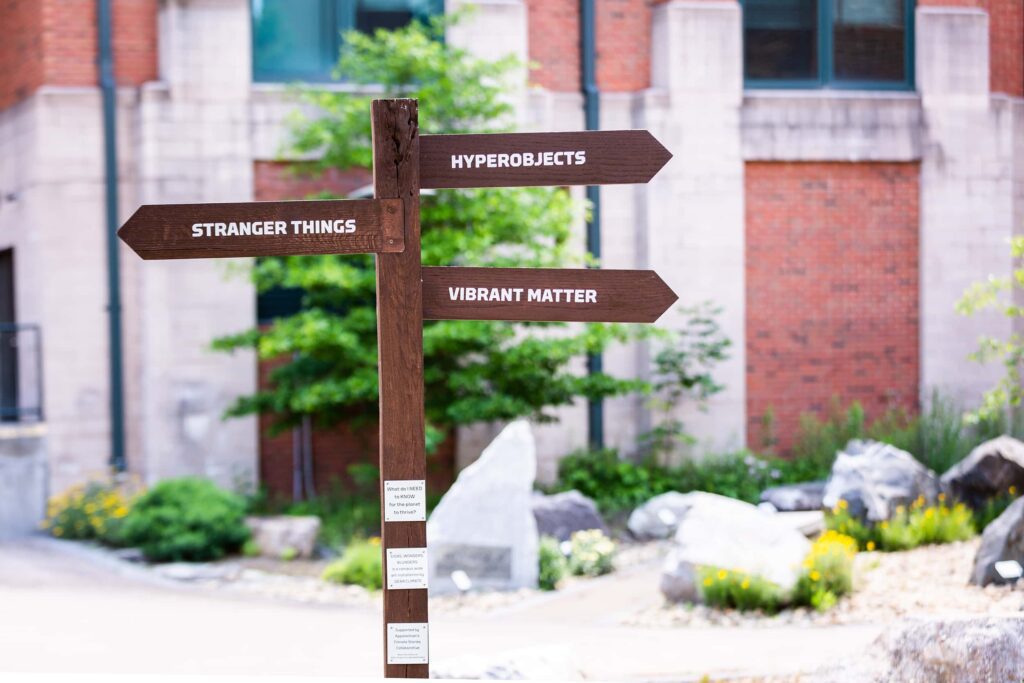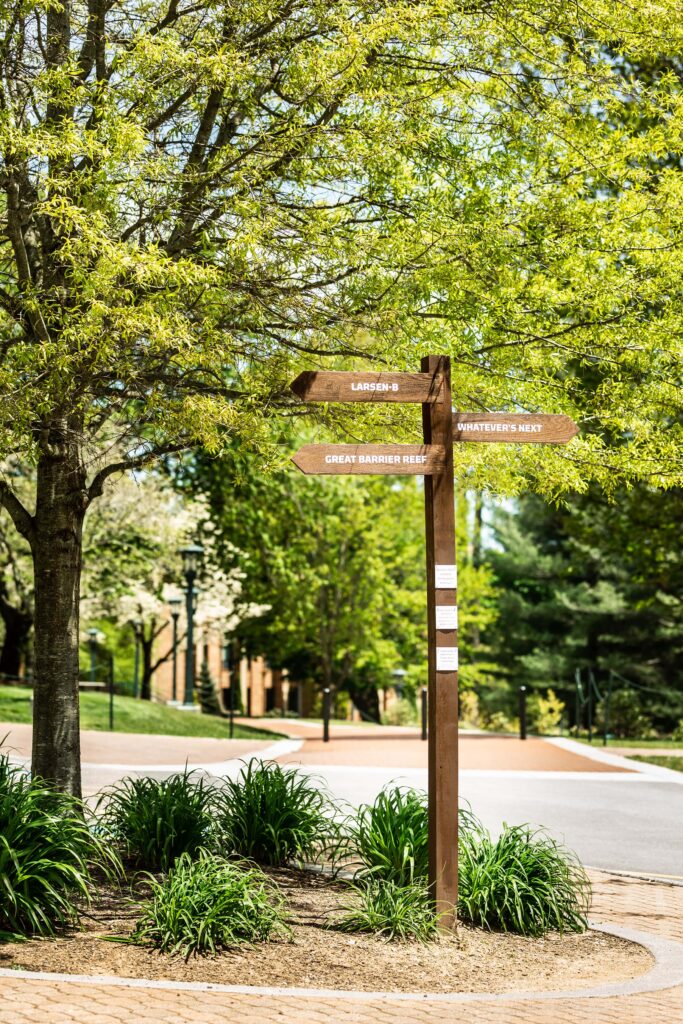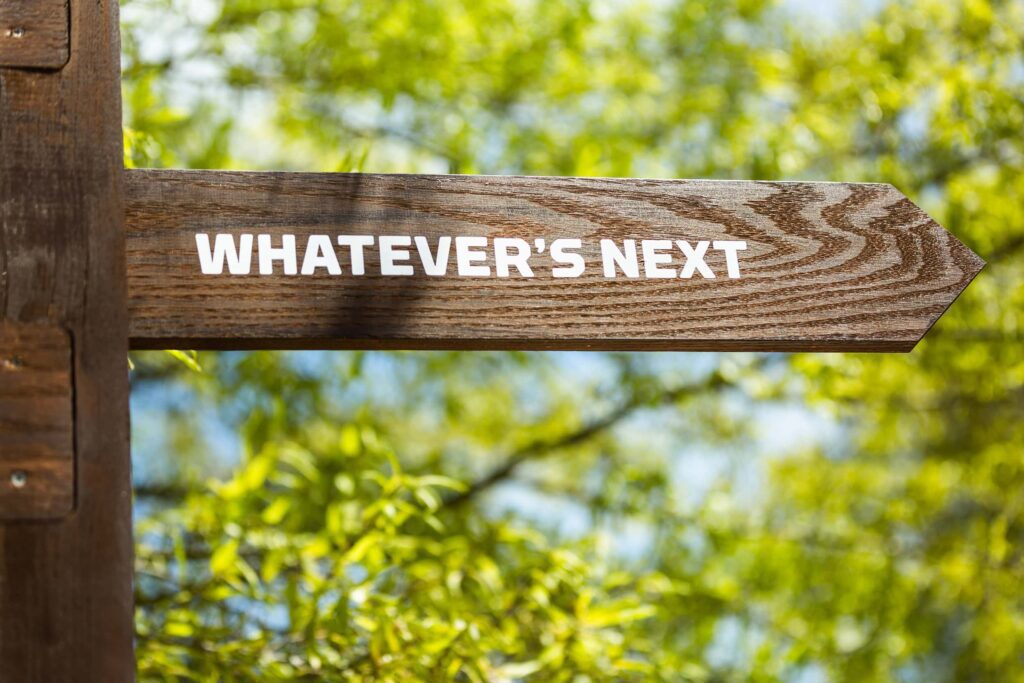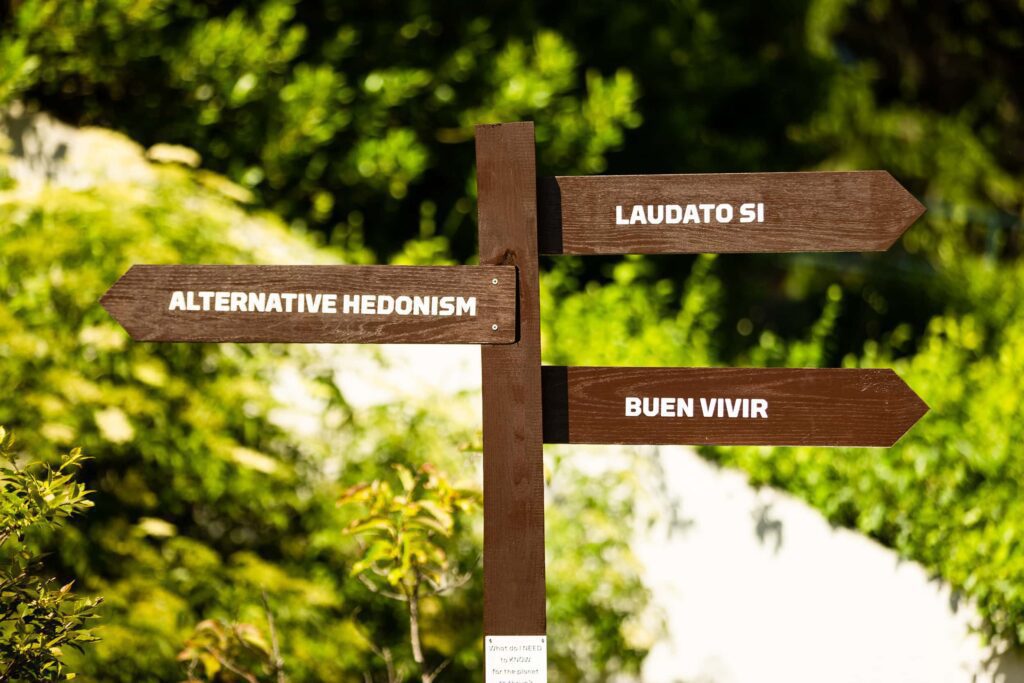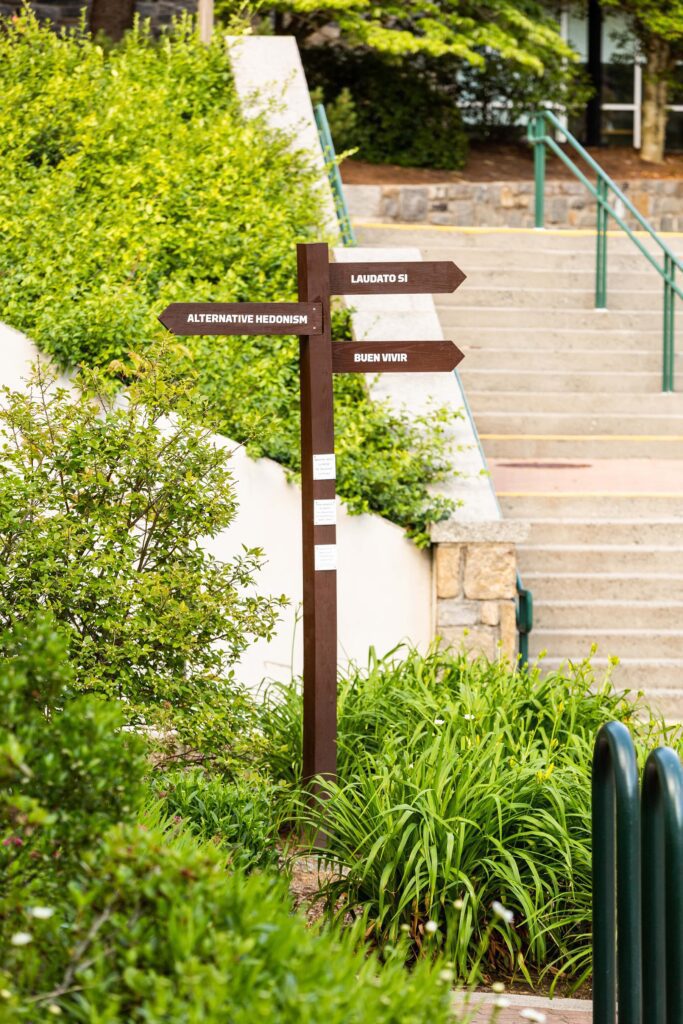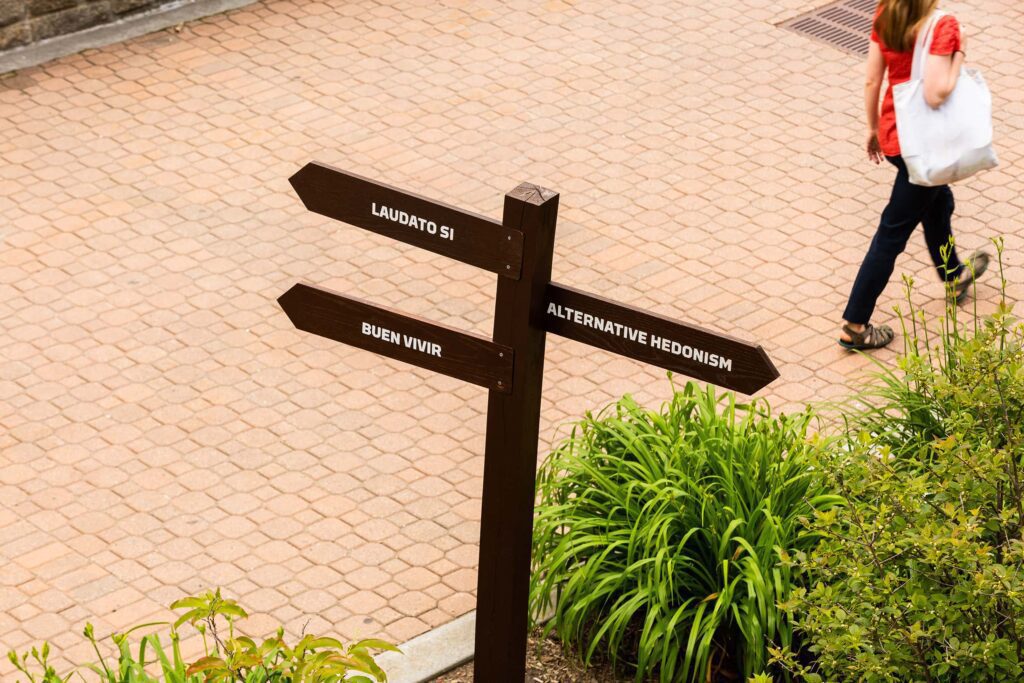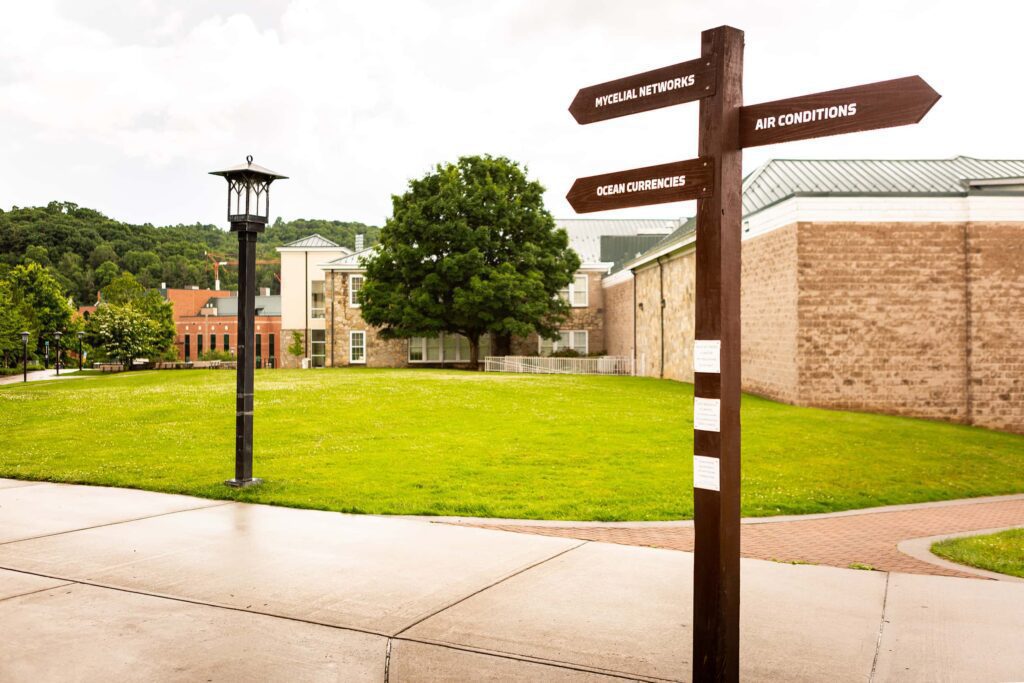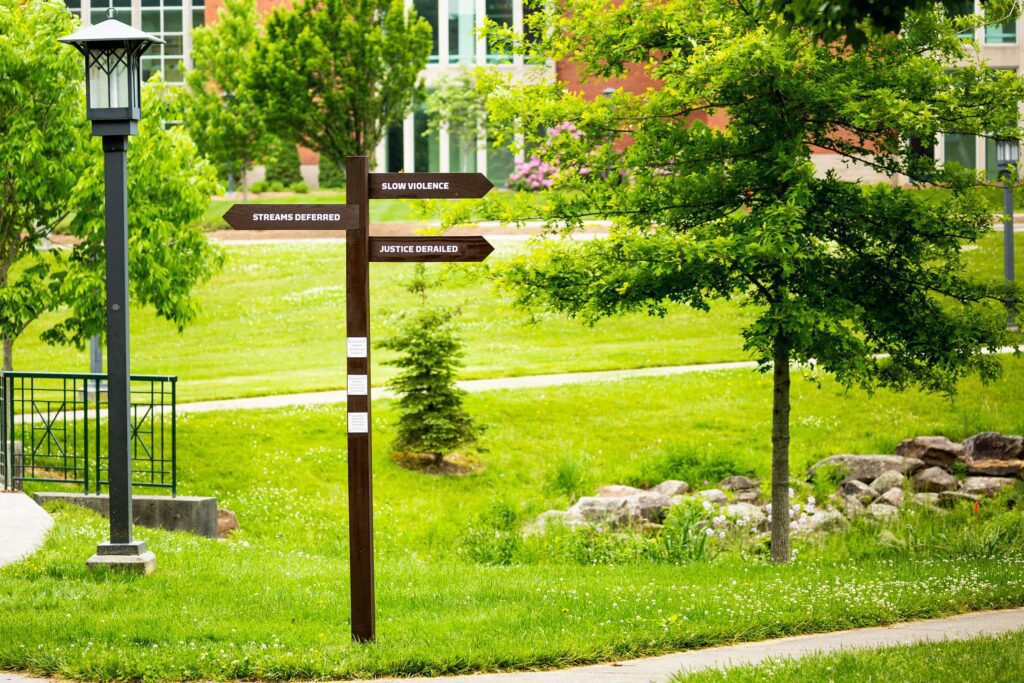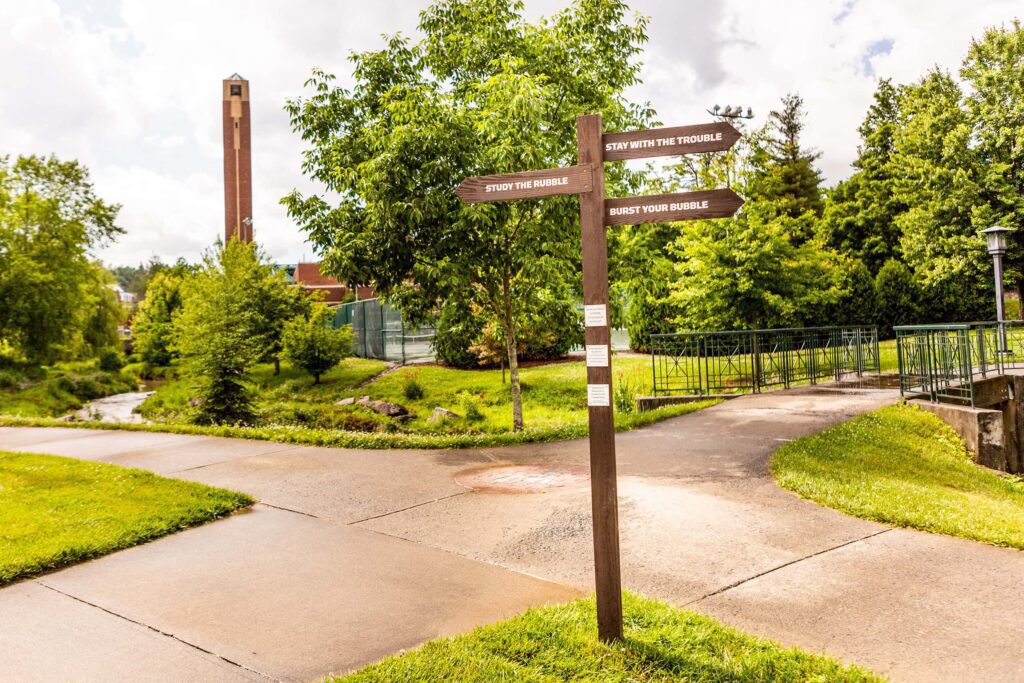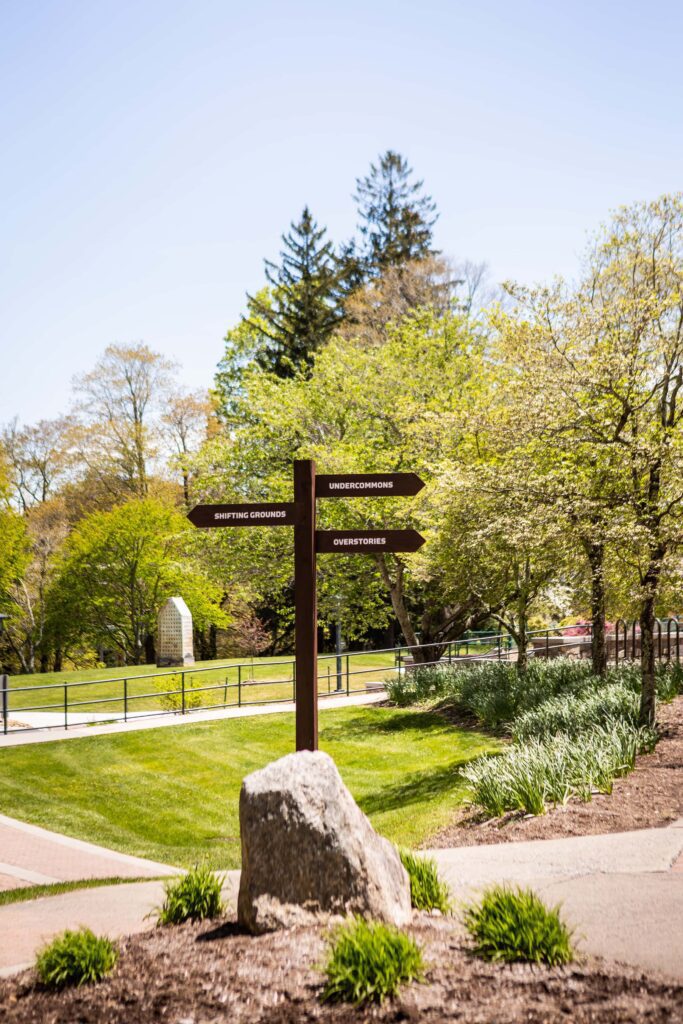Developed in response to a commission from the Climate Stories Project at Appalachian State University, and conceived and executed—in collaboration with curator Jennie Carlisle—as a campus-wide installation for a large public university with a strong environmental focus, “Signs, Wonders, Blunders” brings Dear Climate’s signature aesthetic and tone of enigmatic and off-kilter inquiry to bear on questions around teaching, learning, curriculum, pedagogy, and higher education.
Trail markers contain evocative fragments of language gleaned from a wide variety of climate related scholarly texts from many different disciplines, along with the artists’ own playful puns and aphorisms.They are set up at pathway junctures across campus to suggest various nodes of conceptual convergence and divergence. The language chosen for the trail markers is meant to orient and disorient walkers, physically and intellectually, as well as to disrupt our normal methods of navigating both physical and conceptual terrain here on campus. Overall, the project encourages us to cultivate a better relationship to the more than human world, and to wonder at how we might think and feel differently in order to remain resilient and engaged in the face of multiple connected global crises, from climate breakdown and mass extinction to pervasive inequality and economic instability, and the migrations of many living beings (including humans).
The trail system implied by the placement of the markers does not require viewers to encounter the markers in a specific order or as an entirety in order to meaningfully engage with the project. Instead, the installation encourages new routes between markers, open ended exploration across campus, and freeform engagement that allows those who encounter elements of the project to create their own conceptual connections over time. Throughout Spring and Fall 2020, the Climate Stories Collaborative invites classes, clubs, and individuals to “adopt-a-sign” and to make artwork and other forms of creative research that takes their cue from the themes of the project and ideas presented by specific trail markers.
